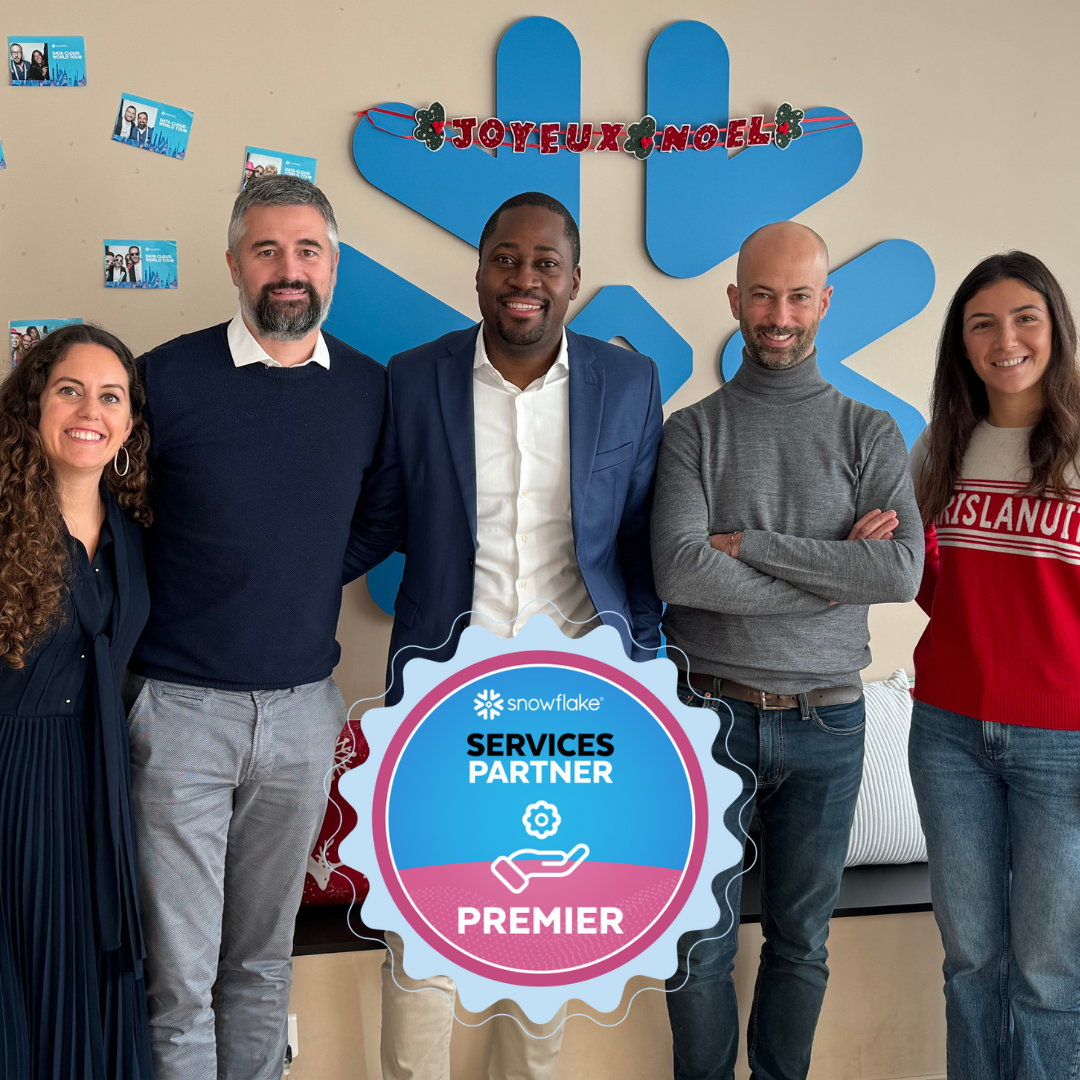Agile method is well known in software development, but what are the advantages of agile for a Business Intelligence project? And how does agile apply, in concrete terms, in all the stages of a data project? We suggest revisiting the basics of agile and the tips for ensuring a successful project.
What exactly does agile mean?
Agile means the methods and practices created in software engineering that highlight collaboration and adaptation to ensure that projects succeed. These principles were documented as far back as 2001 in an agile manifesto written by 17 software development experts. Their aim was to offer a method of reducing the failure rate of software development projects. Failures resulting from the unwieldy nature of traditional methods, in particular “waterfall development”, also known as “V-cycle”.
In the “V-cycle” model, a project follows linear and sequential phases. It progresses through six stages: definition of the project's requirements, analysis, project design, implementation, validation, then, the final stage, commissioning. This method has its advantages. It provides a clear framework for the schedule, deliverables and budget. But its limitations are also well known: problems in scoping the project, modifying the plan and involving users. If the product is not revealed to users until the very end of the project, the company no longer has the time or budget for modifications.
The agile method provides a different approach, with adaptive planning and collaboration between small teams (between 3 and 9 members maximum) and their internal clients. The idea is to have the capacity to provide quick delivery of a Minimum Viable Product (MVP) so that the validity of a prototype can be tested by users. The project can thus be adjusted by iteration (short “sprint” development times), with continuous product improvement cycles. The agile method also means that an estimated budget that can be adapted as the project develops. By combining anticipation, adaptation and collaboration, agile aims to avoid a nasty budget surprise at the end of the project!
How the agile method can be applied to analytics and BI ?
Agile method can be applied to a wide variety of projects, particularly in BI. Because agile helps us ask the right questions, in advance, about an issue to which we want to respond with data, which users really need. This prioritizing of the most important needs will serve as a guide in achieving the Minimum Viable Product. In BI, an example of MVP can be a functional dashboard around a few key priority figures. Other figures or visualizations may be added during subsequent iterations.
Because an agile BI approach means that data, reports, visualizations and dashboards are scalable according to user needs and the company’s processes. We understand, therefore, that the choice of BI tools must also be adapted to an agile approach. With self-service BI platforms that can be easily tested and handled by users who are not technicians. Another essential selection criterion is the possibility of ensuring rapid development of the BI platform at the best price through the addition of modules or APIs.
Lastly, in Business Intelligence projects it is essential that users take ownership of the tools and even become drivers in developing them. This is where another aspect of agile is useful: its recommendations on documentation (all documents created throughout the project). With traditional methods, this documentation is very time-consuming. But with agile, “software that works prevails over comprehensive documentation”. With the agile method you can use the “scrum” method (scrum as in rugby) with daily checks (“daily scrums”) on the project's progress. The purpose of these quick meetings is not only to identify problems. They also help promote a team spirit, transparent communication and mutual help. The right conditions for stimulating new ideas and integrating user feedback related to the checks. And users who will become the first ambassadors of BI.
3 basic tips to ensure a successful agile BI project
An agile BI approach means concentrating on the strategy to be adopted, the data problem to be resolved and user needs, before thinking about tools. Building this strategy remains complex, so the support of an expert agile BI consultant will be useful. Here are three key tips to guide your agile BI project.
1/ The quality of your data is the most important criterion to take into account when launching your BI project. The first crucial step will therefore be an inventory of the data that is available or missing and the processes in place within the company for collecting and processing data. The objective is to detect data silos and duplicate or transformed data.
2/ Define, in advance, the success criteria for your agile BI project. They should be concise, realistic, directly measurable and should include quantitative and qualitative measures. For example, measuring the extent to which teams are trained in agile methods and understand the challenges of agile BI. Also ensuring that user needs are ranked at each iteration. And keeping a record of user participation in daily team activities such as scrums.
3/ For your minimum viable product, select the use case with the highest priority level and a rapid ROI. The success of this project will not depend on the quantity of data but on their quality and relevance. It will be your “shop window” project, with the small agile team you have built that includes members of the IT team and business users. The accessibility of project data will make other users want to take part in future workshops to develop the BI platform and, above all, use it!
In conclusion, agile BI agile has many advantages. But not all BI projects are suitable for an agile approach. For example, if you have to produce a dashboard that meets a wide range of needs from its first iteration. Lastly, agile involves a lot of team work, with cross-disciplinary IT and business skills. This collaboration cannot be imposed but can be built if support is provided during the change process.
Suggested reading:




